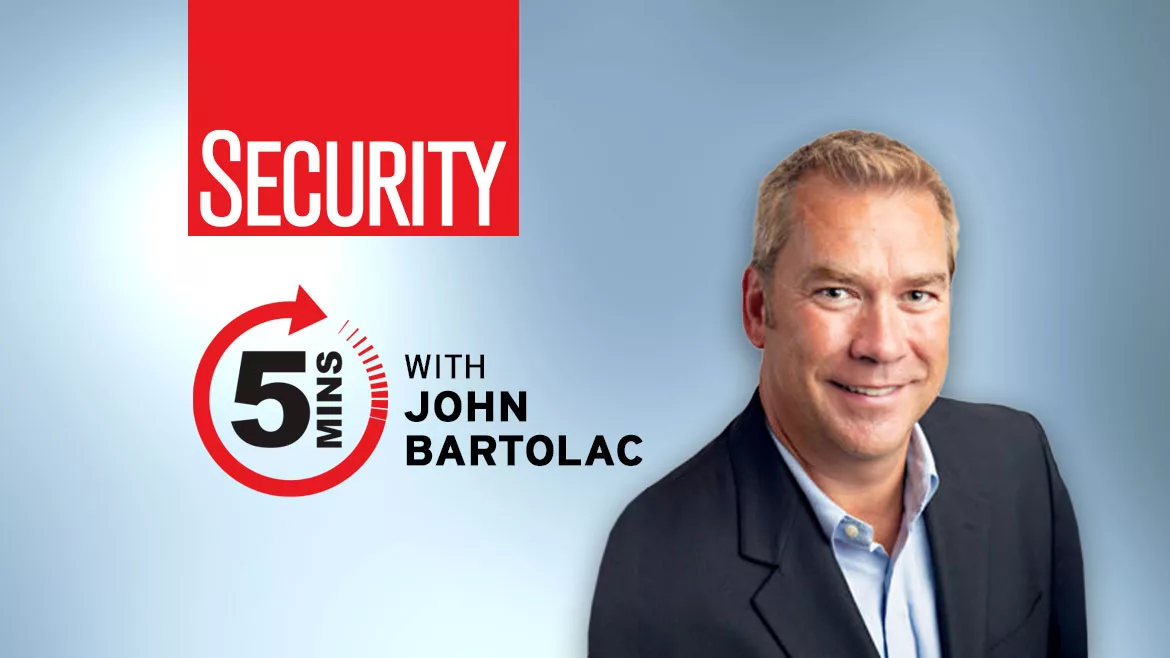5 Minutes With
5 minutes with John Bartolac: Top security concerns in retail today

Headshot courtesy of Axis
Security magazine sits down with John Bartolac, Sr. Manager, Industry Segments Team, Americas at Axis Communications, to discuss top security concerns in retail today and more.
Security: What are the top security concerns in retail today, and what are the top operational challenges?
Bartolac: Organized retail crime (ORC) — the large-scale stealing of merchandise to resell — continues to plague retailers of all types. According to the National Retail Federation, ORC costs retailers an average of $700,000 per $1 billion in sales, which is no small sum. To combat this, retailers should aim to implement comprehensive surveillance systems comprised of analytic-enabled audio and video technology that can catch networks of thieves before they have the chance to strike. If they do strike, high quality video helps to catch the culprits and put a stop to their destruction.
As for operational challenges, ongoing supply chain disruptions are causing a myriad issues for retailers, from stockouts to order delays to the labor shortage. Keeping users happy is a top priority for retailers, and, in order to navigate supply chain challenges successfully, they need smart surveillance technology that can monitor operations in real-time. For instance, retailers should be using technology to monitor shelf supplies/merchandise to stay on top of stockouts, as well as queue management analytics to manage checkout lines and enhance the user experience. People counter technology should also be used to gauge typical store traffic, which can help determine busy/slow times and ensure proper staffing. After all, you can’t effectively fix a situation if you don’t have a clear idea of what’s going on in the first place.
Security: Did the COVID-19 pandemic make a lasting impact on retail surveillance? If so, how?
Bartolac: Absolutely. I believe the pandemic really emphasized the role of analytics in retail surveillance. During the height of the pandemic, retailers had to abide by all sorts of capacity restrictions, as well as make sure that users abided by social distancing rules. Some popular analytics during this time included heat mapping, queue management, people counting, and traffic monitoring, allowing retailers to reduce queuing times, keep clusters of customers at bay, allocate staff efficiently, and, ultimately, increase profits. These solutions will continue to benefit retailers well into the future.
Security: How can traditional surveillance technology make an impact not only on retail security, but also on retail business operations?
Bartolac: While surveillance technology is primarily used for security purposes, it is increasingly being used to optimize overall business operations in retail. For instance, if you know where users tend to travel throughout your store, you can better perfect your layout, driving users exactly where you want them to go and showing them exactly what you want them to see. You can also better allocate staff with these insights, ensuring that people are always around to assist users as needed, and that areas at high risk of theft are covered. Knowing your users and their typical habits and behaviors will help you better serve them.
Security: How do analytics play into retail surveillance and its impact on business operations?
Bartolac: With analytics, retailers can keep their users, employees and stock safe while also gathering actionable insights that can be used to optimize overall operations and grow revenues. These insights are the basis upon which a successful should plan to operate, as they provide a comprehensive view of the habits, behaviors and even feelings retailer of your most important stakeholders — your users. By acting upon the insights gathered by analytic-enabled surveillance technology, you’ll keep your store running smoothly and efficiently while keeping users happy and loyal.
Security: Can in-store surveillance technology also aid in e-commerce optimization? If so, how?
Bartolac: Of course. Interestingly enough, people’s in-store behaviors tend to mimic their online shopping behaviors. By gathering consumer data via surveillance technology placed strategically throughout a store, you can act on what you learn both in-store and online. crave personalization in their shopping experiences — no matter the format — so applying insights across your physical and digital presences only helps to strengthen that overall personalized experience. This, again, creates a happy and loyal user base.
Security: What are some surveillance technologies that all retailers should be implementing now to “future-proof” their operations?
Bartolac: Analytic-enabled, end-to-end surveillance systems are crucial for retailers who want to ensure value for years to come. Looking to the future, you ultimately want a system that continuously provides value, helps you meet business objectives and performs reliably to ensure that you’re able to deliver a consistent service to users. Although having a patchwork of technology may be cost-effective in the short term — especially if there are many legacy solutions in place — it’s key to consider the bigger picture and think about how this will help (or hurt) your business in the long term. End-to-end solutions can give retailers the ability to integrate several capabilities — such as video surveillance, access control, audio and analytics — into a single system.
Looking for a reprint of this article?
From high-res PDFs to custom plaques, order your copy today!







